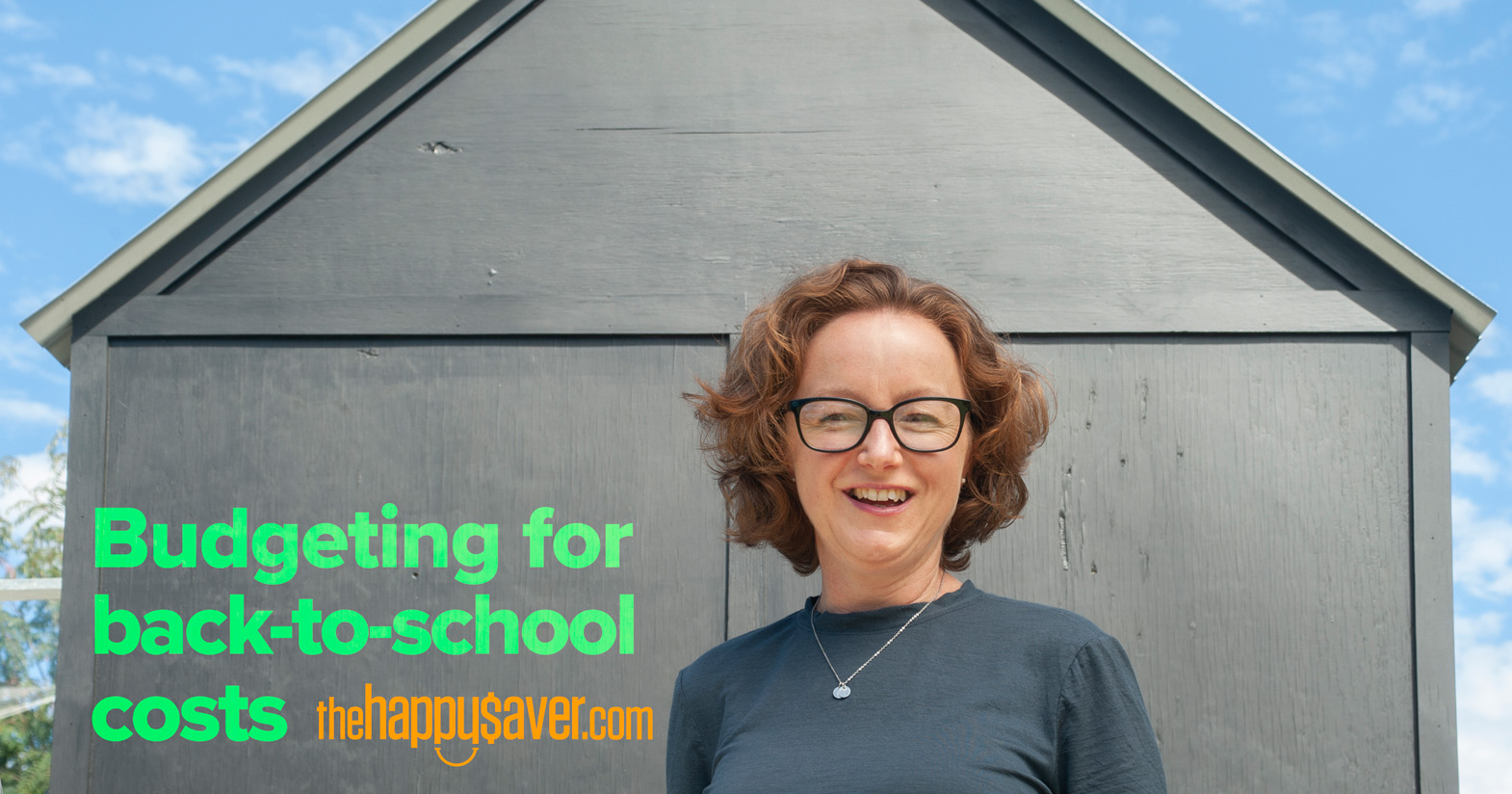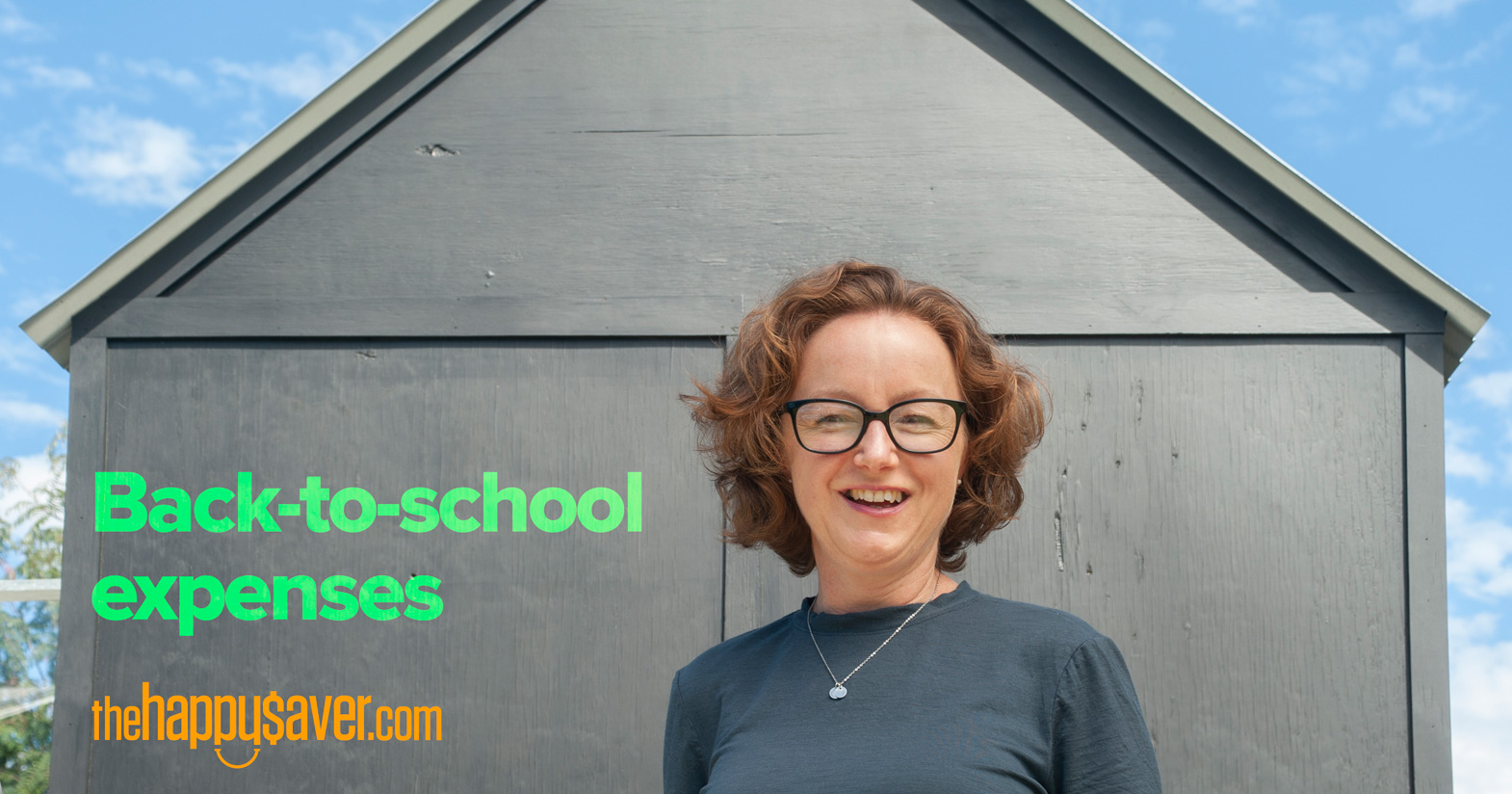
Six Steps to Plan for Back-to-School Expenses
How do you avoid a back-to-school budget blowout? Ruth shares six steps that will help reduce the stress that is associated with this expensive time of year! Uniforms, stationery, extracurricular activities and school trips, she’s got it covered!
To prevent a back-to-school budget blowout, here are six steps you can put in place in the years, months and weeks leading up to school starting back up. These steps apply whatever age the pupil might be and will help you reduce your out-of-pocket expenses and ensure you have cash available to pay for them too.
- Start a dedicated bank account
- Create a specific back-to-school budget
- Buy second-hand when you can
- Scout the sales and volunteer
- Sell or swap your stuff
- Help others
1. Start a dedicated bank account
Start a dedicated bank account specifically for your child’s educational expenses as early as you can. If you set aside $5 a week from when your child is first born, you’ll have $1,300 available when they turn five! It creates a great habit and allows you to always have money set aside for your child’s school needs, which removes any stress and anxiety about fitting it into your weekly budget.
Give the account an appropriate name like “Alex’s school expenses” to be distinct from your other accounts. You can start with just $5 or $10 a week, but as time goes on and you start to learn the actual costs of schooling, you can increase or decrease this. You can also make a bigger one-off transfer to increase the balance if you know a larger expense is coming up, such as a school camp.
Each time you need to buy something for Alex, just transfer the money into your spending account and pay for it. Create an account for each of your children because they have different requirements such as uniforms, school camps, or extracurricular activities at different ages.
2. Create a specific back-to-school budget
In my first post about my experience with back-to-school expenses, I worked out roughly how much money I would need for the coming year by speaking with the school itself and parents whose children already attended it but were one or two years ahead.
I then used PocketSmith to create a budget specifically for my child. As I purchased items throughout the year, I categorized them against this budget. In an instant, I can then see how much all the school-related costs add up to. You could use this information to plan for the next child you have that is about to start school, and you will also be an excellent resource for other parents who have similar questions.
3. Buy second-hand when you can
There is no shame in buying second-hand clothing for school. Some kids may even prefer not to look like the ‘new kid’ with all their new gear on the first day of term!
Once you know what school your child will attend, keep an eye out for uniforms in the year leading up to the start of school. Try Facebook groups, thrift stores, and the school itself. When you see an item your child will need, buy it and keep a note of what you have to avoid double-ups!
4. Scout the sales and volunteer
There are countless back-to-school sales. Sign up to email lists of the stores you plan to go to, and keep all those discount codes they offer you as they will come in handy at the checkout!
Phone your local school and ask what school fee assistance may be available to you. Ask too about any scholarships that are available to offset the costs of school uniforms and laptops.
Many schools will offer you discounts on activities if you volunteer your time to the school. This is a great way to lessen your costs, plus it’s always fun to meet other kids and parents too!
5. Sell or swap your stuff
Kids often grow out of their uniform well before they wear it out, so take the opportunity to sell this uniform to someone who needs it, then add this money back into your child’s specific bank account for future use!
If your child is returning to the same school, do a stocktake of what items of uniform and stationery they already have to prevent yourself from spending good money twice! Use your school’s social media channels to talk to other parents from your school and see if you can swap unwanted items.
6. Help others
I like to ask my school if there are parents who need financial support to prepare their children for school. If you can, donate some money, uniform items or stationery to the school to distribute at their discretion to make sure that a child can start the school year off feeling ready, able, and excited to learn. After all, school is a central part of your child’s life, and by helping each other out, we can each make a positive difference in our community.
Ruth blogs at thehappysaver.com all about how she and her family handle money. What’s the secret? Spend less than you earn, invest the difference, avoid debt and budget each dollar that flows through your hands. She firmly believes that if you can just get the basics right, life becomes easier from there on in.





